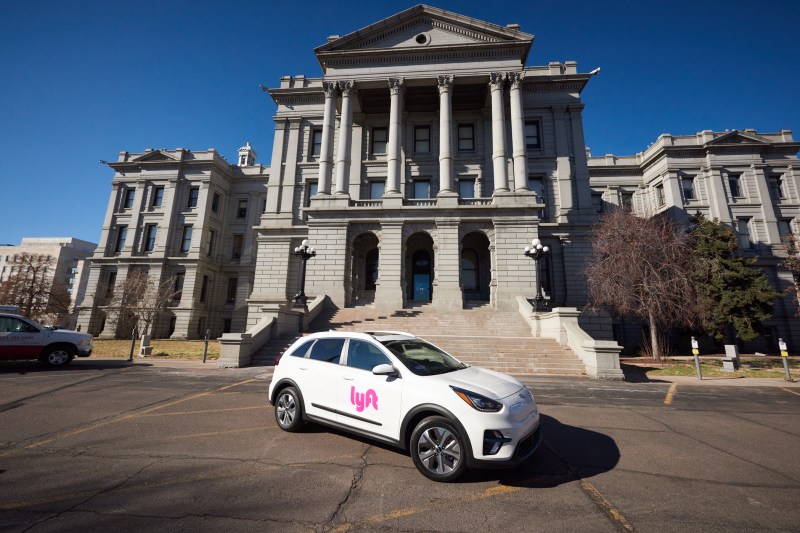Lyft to Add 200 Electric Vehicles to Its Colorado Fleet

Governor Polis and Mayor Hancock announced this morning that the ride-hail company Lyft will add 200 electric vehicles to its Colorado fleet, a move Polis says will clean up polluted air and save drivers money.
“I was just talking to a Lyft driver who said that their single biggest cost is gas,” said Polis with public officials and Lyft executives at his side. Many Lyft drivers use personal vehicles but the company also rents cars to its drivers. “Lyft drivers who use rental cars can ditch their gas bills and pocket the extra earnings.”

The drivers could save $70 to $100 per week in fuel costs with the EVs, according to a press release. The governor also touted the move as a way to improve the economy while reducing carbon emissions and cleaning up the state’s increasingly polluted air.
“Whenever we can replace a gas-powered car with an electric car, there’s a net positive impact on air quality and emissions,” he said. “This is what our renewable energy future looks like. Getting creative. Saving people money. Providing more choices. Creating jobs. And staying focused on the goal of reducing our emissions and improving air quality.”
In Colorado, 53% of electricity is generated from fossil fuels, a number the governor says will be reduced to zero by 2040. But even today, electric vehicles are cleaner than those powered by gas, said the governor.
“Even with our coal-fired plants, electric vehicles are far more efficient than converting carbon into energy with an internal combustion engine,” he said.
The 200 vehicles represent the largest deployment of EVs in Colorado history, and one of the largest in the country, said the press release.
Colorado car buyers can receive $5,000 in tax credits when they buy electric vehicles. In May, the state passed a law that extends the same benefit to ride-hail companies like Lyft, an incentive that pushed the company to choose Colorado for the largest number of EVs the company makes available to drivers through what it calls the Express Drive rental program.

Politicians who push for electric vehicles tend to obscure a central fact about EVs: They have many of the exact downsides of gas-powered cars. They cause congestion, they have the same killing power, and they require an enormous public expenditure for the construction and maintenance of roads — money that could be funding transit at a time when the Regional Transportation District faces a $40-plus-million budget shortfall next year.
“We can walk and chew gum at the same time,” said Polis, referring to EVs over adding other mobility choices. “We anticipate that there are always going to people who want to drive a vehicle. If they want to drive EVs, that’s a great choice. At the same time we’re pursuing many other ways to provide more commuting choices to get people to where they work or live.
Danny Katz, of CoPIRG, who showed up to support Lyft’s move, backed up the governor’s push to pursue EVs and sustainable forms of transportation at the same time.
“We absolutely need to do more to convert our transportation system to one that’s built on transit, walking and biking,” he said. “That said, our current transportation system produces a lot of pollution. We should be doing what we can to ensure that every mile traveled is a pollution-free mile. If that means converting our vehicles to electric powered, whether it’s cars or buses, that is an important step and we should be doing more of that.”
Lyft drivers will start using the new vehicles next month and all 200 will be rolled out through January.


